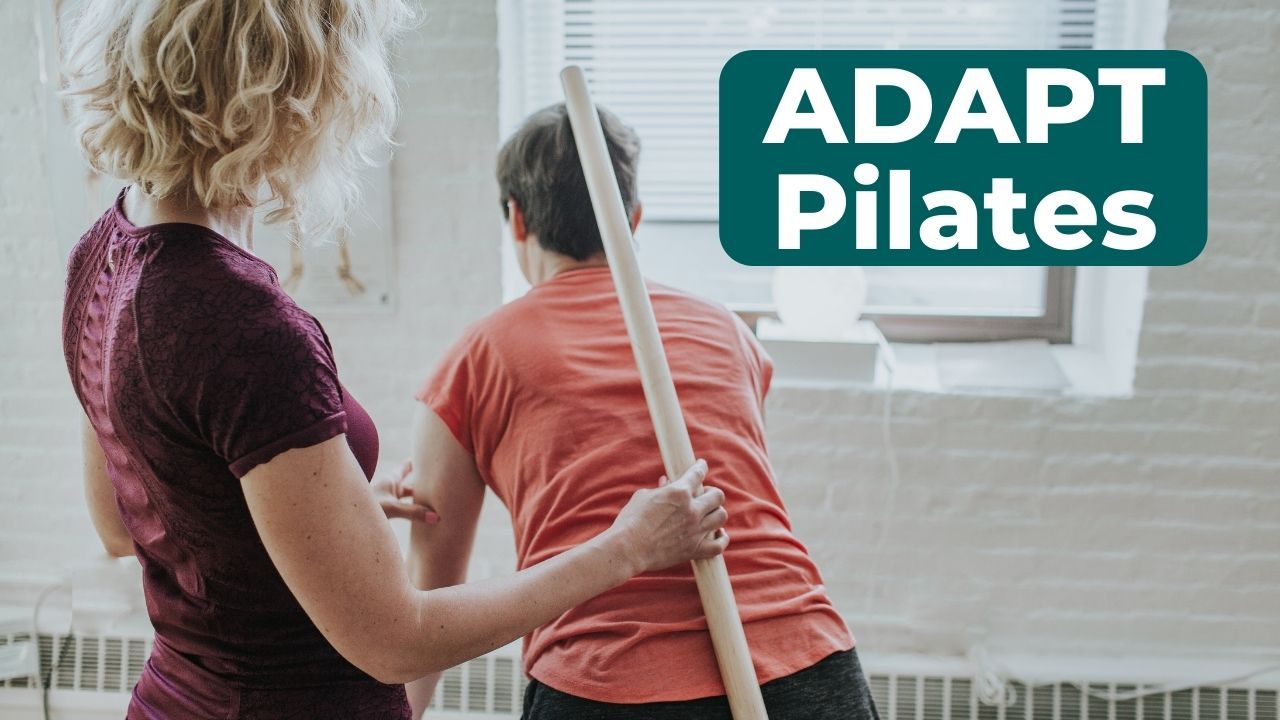ADAPT Pilates™️ | Unlock Your Unique Potential
Jul 19, 2023
One of my favorite questions to ask every new Pilates client is this: "Why do you think Pilates is right for you? What are you hoping to get out of your Pilates practice that you can't get from the millions of other forms of exercise, be it the gym, yoga, crossfit, boxing, personal training, etc etc."
In my opinion, Pilates works magic when adapted to each individual person. The Pilates method is unique in the fitness world in the way that it is customizable to each individual, and I believe we should be using it as such. That's why I call my style ADAPT Pilates™️. The name represents pretty much my overarching approach to the method. Adaptability is where the method shines.
Related: How To Adapt Pilates Exercises To The Person
So what does ADAPT stand for?
In my nifty acronym, each letter represents one step along the journey to living our best life.
A_ssess
D_esign
A_lign
P_rogress
T_hrive
Here's what that means, step-by-step:
Step 1: Assess Your Needs and Goals
You need a starting point and an endpoint. Maybe you have heard this analogy before, but it’s totally stuck with me, and helps me help my students. Imagine you are parachuting out of an airplane somewhere in the country. You land safely but you have no idea where you’re actually at. You know where you want to go (home), but without knowing where you are located right now, any direction could get you further away from your home.
In regards to Pilates, are you sure you need to stretch your hamstrings? Who says you need a stronger core? Maybe there is something else going on that causes your back pain.
Step 2: Design a Customized Program
With a clear idea of what your body’s strengths and challenges are and a clear goal, the next step is now to choose specific exercises. You're looking for these to be appropriate for your body and skill level while helping you take measurable steps towards your goal.
Step 3: Assist and Align
We all have movement habits, and we will naturally perform the chosen exercises with our usual patterns. Because of that, you might completely miss the purpose of an exercise because you’re unable to recognize and change your body’s habitual patterns. That’s where a teacher with a trained eye comes in. She will be able to point out when you’re overusing the muscles that are already strong and underusing those you need to strengthen to create balance in your body. Pilates exercises are not only created to challenge your body, but also to assist your body to achieve new movement patterns that - without the (temporary) assistance would be unachievable. (Until we find the magic wand 🪄 that lengthens ours hamstrings instantaneously we'll accept some help, thank you very much!)
Step 4: Progress Intelligently When It’s Time
After a certain time (that's different for everyone) your body and mind have adapted to the new stimulus and input. It’s time to choose new exercises or variations that will challenge you again.
Step 5: Thrive Long-Term
Our bodies and minds - like everything else in this universe - are never stagnant. We need consistent maintenance. Just like your car battery requires regular charging by driving your car (or plugging it in) and your house will accumulate dust if you're not cleaning regularly. All the joints and muscles in our body need regular movement, not too much, not too little!
In order to maintain our physical health which - according to Joseph Pilates - is the first requisite of happiness, we need to take our bodies through all possible movement skills on a regular basis. It's a regular maintenance program. A good Pilates program will challenge all your joints on multiple planes of movement. I can recall many instances in which I haven't even been aware of a restriction in my body until I've performed the specific exercise that challenged that particular movement direction. The term "pre-hab" comes to mind.
The goal of Pilates workouts is to help you thrive on all levels: physically, mentally, emotionally, and spiritually.
To get started with the ADAPT Pilates Method, download my free workout template HERE.

PS: I'd love to hear from you. Shoot me an email with your thoughts about the adaptability of the Pilates method.









